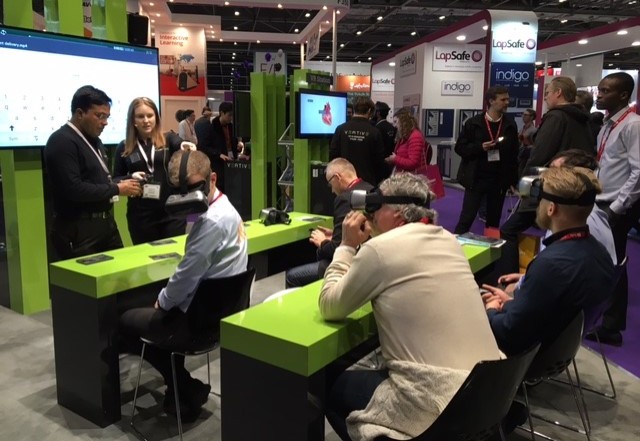When you start to think about it, there are several different use cases that stand out. History is probably the most obvious, giving teachers that ability to transport students back in time and really make the experience come to life.
Biology is also a potential use, with VR enabling students to walk into a simulation of the human body and have a look around, or manipulate certain parts.
Whatever the use case, the key differentiator between VR and other technologies is the immersion factor: “We’ve all used video as a stimulus to get kids interested and excited about certain topics,” Sharma said. “However the biggest challenge with video is that when you go to something like YouTube you’ve got recommendations, you’ve got comments, you’ve got annotations and suddenly the students are being bombarded with things to take them off the video.
“With virtual reality, ultimately there are no distractions for that short amount of time.”
David Mann, educational services director at ClassVR agreed, describing virtual reality as “a really powerful way of delivering content. It gives me much more focus being immersed in a VR experience.”
It seems the content aspect is key when it comes to the implementation of VR, as Colin Bethell, director at Veative, emphsised: “There’s definitely a place for VR in classrooms and enhancing education in this way is just the tip of the iceberg as I’m certain that VR will become widely used for training in other sectors. The most complex side of VR is the content itself, so in order to make this work effectively in the classroom, content needs to be aligned to curriculums as much as possible.
“This will then allow the content to go beyond the ‘virtual tour’ experiences we’re seeing currently and provide interactive supplementary classroom learning materials. Doing this will show the clear benefits of using the technology for teachers and learners, peak their interest and help give VR a seat.”
Roger Walkden, commercial lead for Microsoft HoloLens also saw the benefits of introducing VR into schools. “There’s a whole world of new opportunities that will come through AR and VR for schools and colleges,” he said.
“Learning in 3D is a really different experience. Most people just hate reading, it’s really tough to be able to just read and absorb things when it’s all 2D, but with 3D you can learn so much easier and understanding comes so much quicker.”
He gave the example of Case Western Reserve University in Ohio, which is using VR technology to create “the equivalent of a cadaver.” These are usually very expensive and difficult to manage, but VR gives the opportunity to “create your own version of that which doesn’t need to have specialist equipment and doesn’t requires specialist facilities.”
“Virtual reality allows you to do things that were previously inconceivable,” Sharma concluded. “Virtual reality allows you to create the impossible experience.”
If that doesn’t get kids interested in history, I don’t know what will.
Are you an A+ virtual reality student? Take our quiz and find out!





